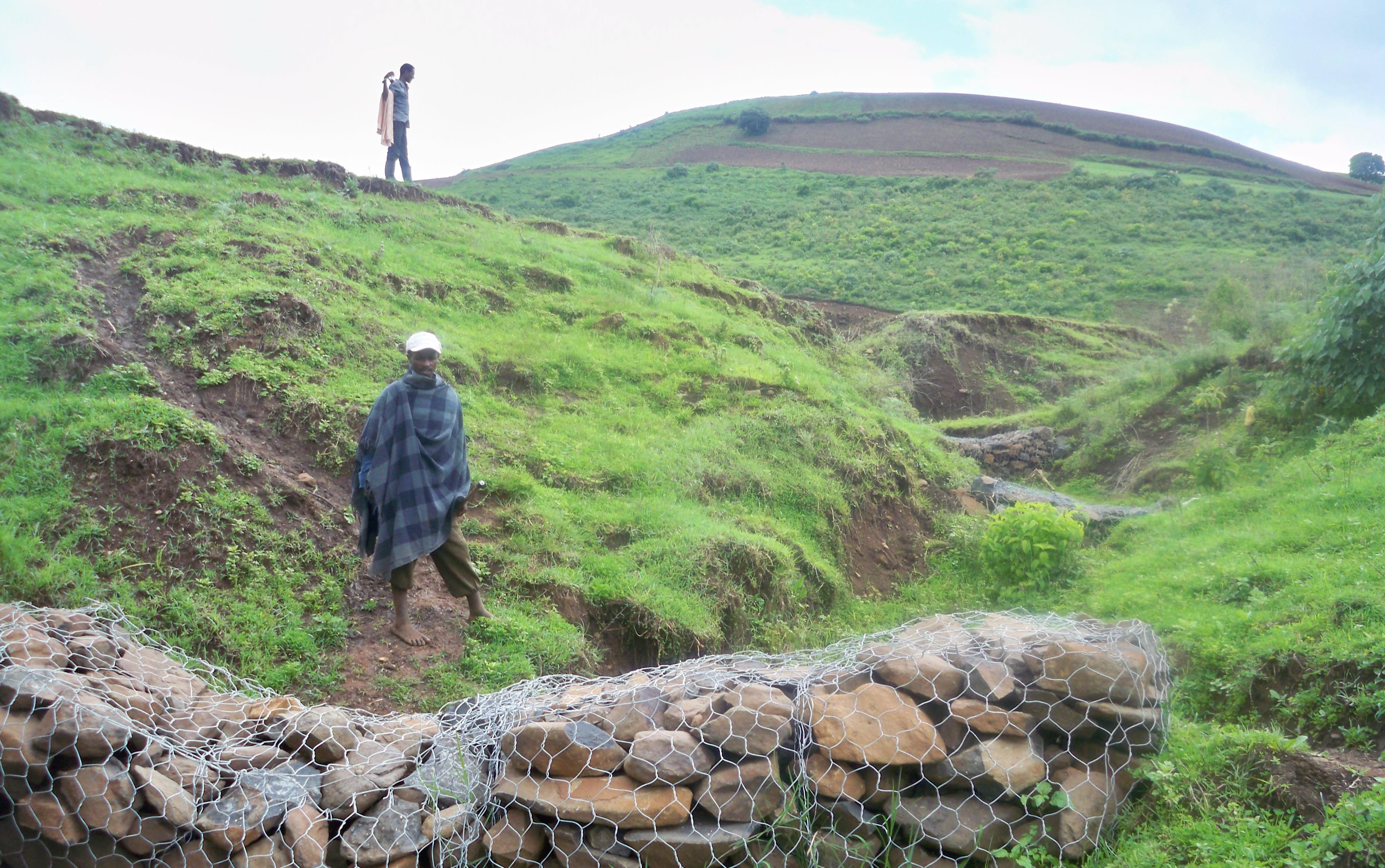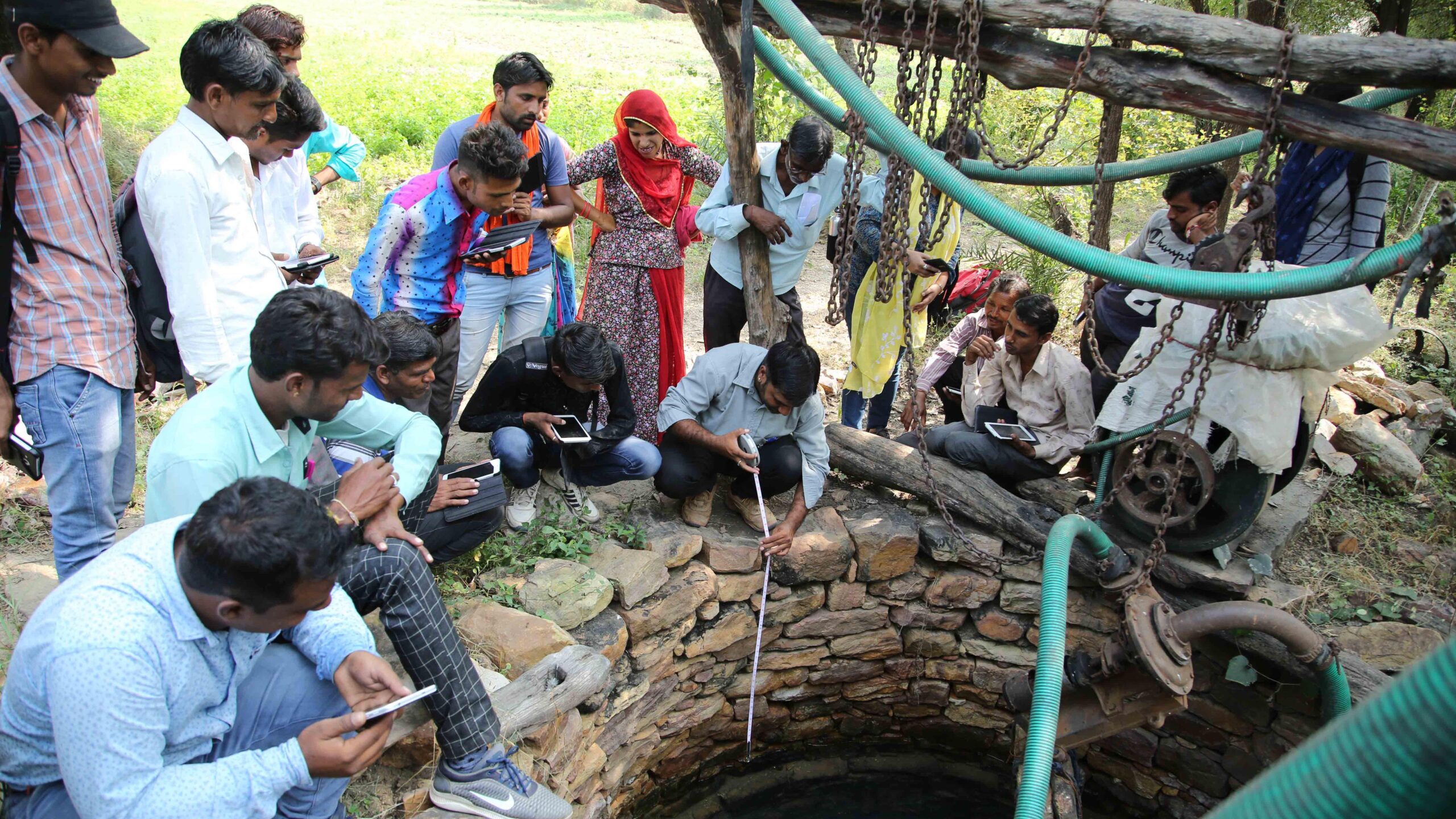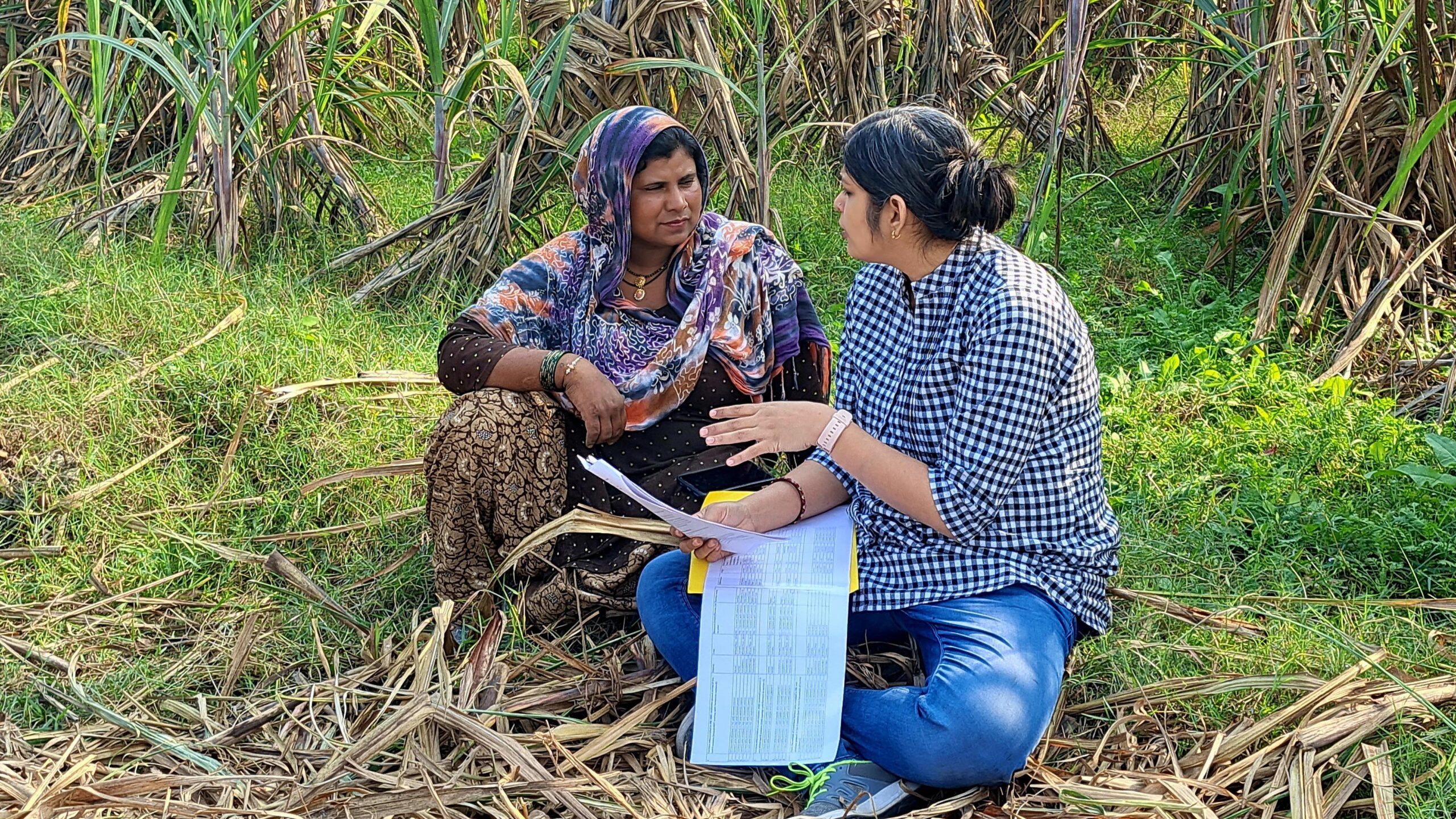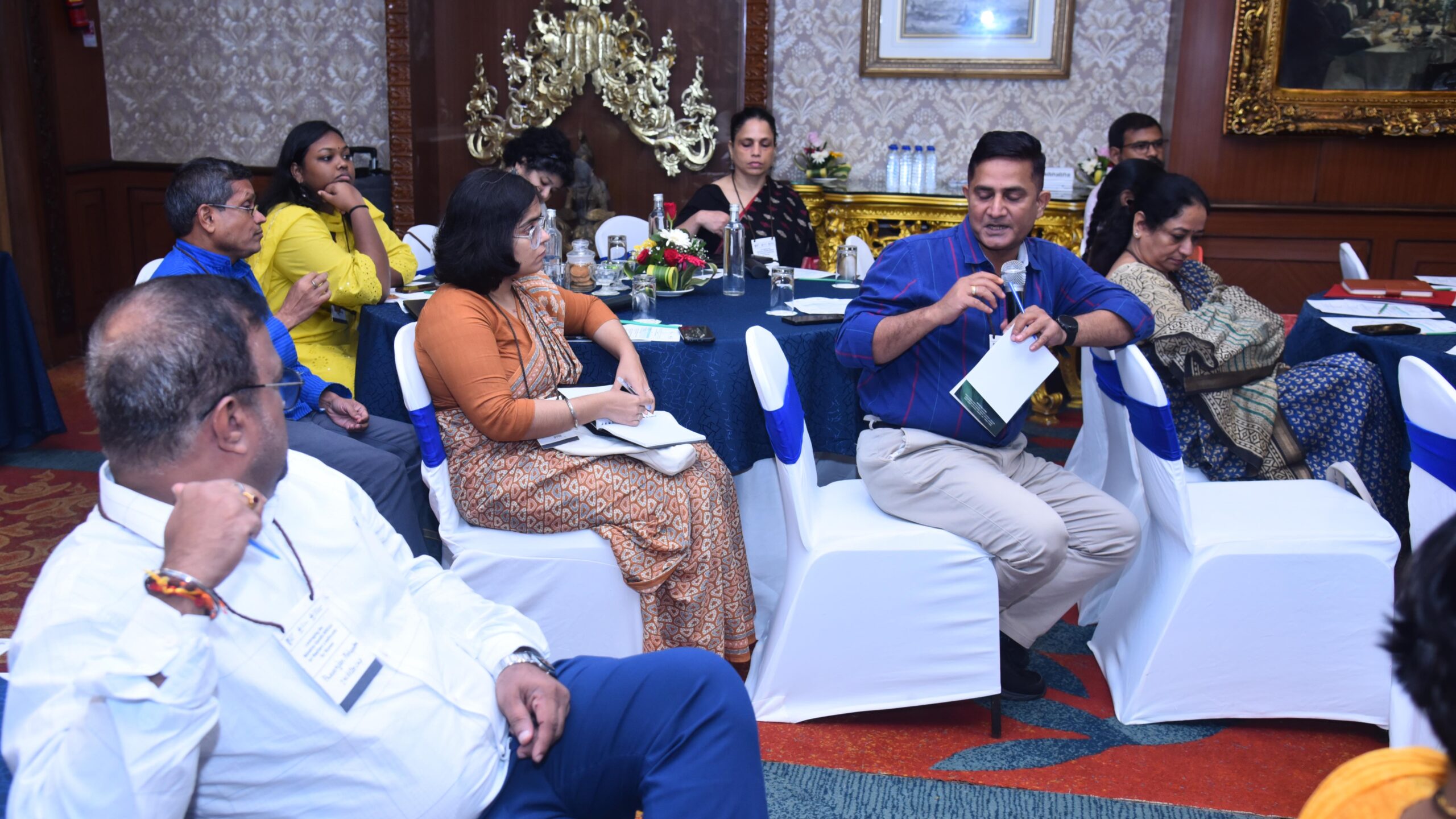Over the last twenty years, the Ethiopian government and a variety of development partners have promoted sustainable land management (SLM) programs to address the threat of land degradation. Past studies evaluating the impact of these programs found that long-term maintenance of SLM is not common among rural communities (Shiferaw and Holden 1998; Tadesse and Belay 2004; WFP 2005). The opportunity cost of investing labor time to maintain conservation structures in lieu of more immediate short-term welfare gains (off-farm wage labor opportunities) represents an important trade-off and obstacle to SLM sustainability in rural Ethiopia.
Sustainable land management is important, but not economically worthwhile unless paired with other investments
The lackluster performance of SLM alone in increasing rural household incomes suggests a need for more comprehensive land management investment packages. A new study in the journal Agricultural Economics by Emily Schmidt, Paul Chinowsky, Sherman Robinson, and Kenneth Strzepek evaluates how investments in SLM and several complementary interventions affect household income. The study incorporates results from a household level propensity score matching analysis and a hydrological model that measures the biophysical responses of SLM into a multi-market model. Simulations are compared to a baseline simulation representing rain-fed highland agriculture with no SLM maintenance (the common agricultural production practice in Ethiopia).
The model results indicate that farmers who invest and maintain SLM structures throughout the analysis period (2009-2030) increase maize production on steep-slope plots by 23 percent compared to the baseline. However, at the end of the analysis period, these farmers’ income (net of SLM labor costs) is 4 percent lower than that of similar farmers on steep slopes who do not invest in SLM (Figure 1). Similar results are reported for farmers cultivating on moderate- and flat-sloped land.
Figure 1: Average household income (percent change from baseline simulation)
IFPRI (Source: Author’s calculation)
*MST: Assumes terrace investment and maintenance on moderate and steep slopes.
Note: Exchange rate in 2005 (Birr/dollar) was 8.67
Several factors are at play. Assuming that all farmers on steep slopes implement SLM and local production increases, agricultural prices decrease to arrive at market equilibrium. Thus, percentage gains in quantity produced are greater than percentage gains in producer income. Moreover, households that invest in SLM devote labor to build and maintain SLM structures that could otherwise be allocated to off-farm income activities.
In order to account for the sub-optimal outcome of investing exclusively in SLM, the study models several packaged investments such as providing fertilizer and improving market access through rural road upgrades. Results suggest that investments that pair SLM investments with the optimal quantity of fertilizer application (current fertilizer use is 50 kg/ha, whereas recommended fertilizer use is 150 kg/ha) reap the highest production gains. Simulations that include fertilizer increases, SLM, and improvements in market access increase farmer income by 23 percent, compared to the baseline, in 2030.
Is sustainable land management too costly?
It is important to note that the costs of SLM are not trivial. When pairing fertilizer with SLM investments, net present value (NPV) calculations suggest that it is more profitable (within the 20 year timeframe) to invest in only fertilizer and allow the land to degrade (Table 1, simulation 4 and 5).
Table 1: Benefit cost of policy options to incentivize sustainable land management sustainability (billion Birr)
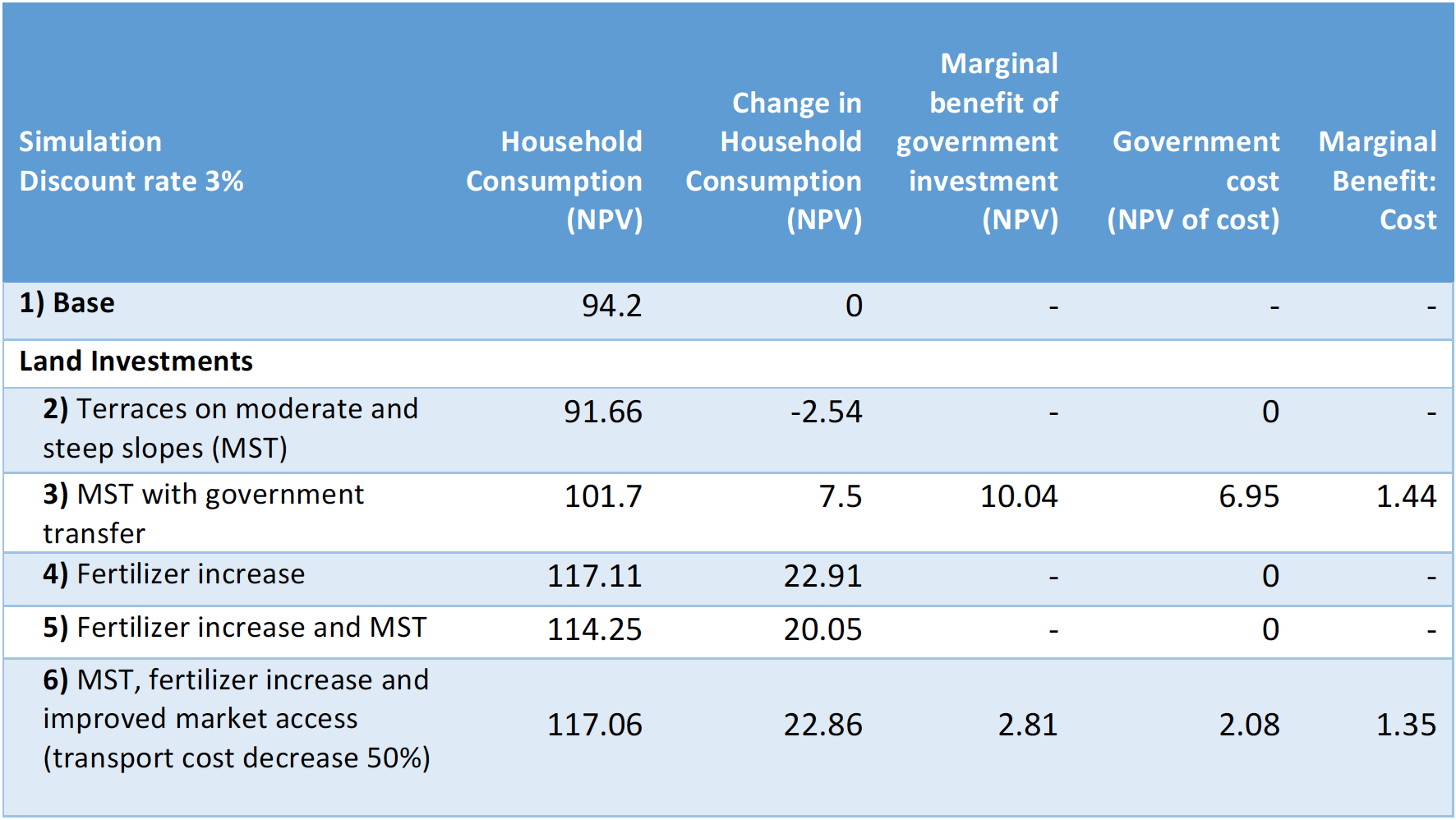 IFPRI (Source: Author’s calculation)
IFPRI (Source: Author’s calculation)
Road infrastructure investments are particularly important in Ethiopia given that a large share of the population lives in remote rural areas, resulting in high transaction costs for sales of agricultural outputs. Although a packaged investment incorporating increased fertilizer application, investments in SLM, and a 50 percent decrease in transport costs would be a costly intervention, results suggest a significantly greater benefit stream—benefits exceed costs by more than a third (Table 1, simulation 6).
Assuming that a packaged program is not viable, providing a subsidy over the 20-year simulation period for farms that maintain SLM infrastructure results in an 8 percent greater NPV than the baseline scenario (Table 1, simulation 3). Results from this study strongly suggest that without some form of subsidy to compensate farmers for the opportunity costs of investing in SLM, land degradation will persist throughout Ethiopia.
Emily Schmidt is a Research Fellow in IFPRI’s Development Strategy and Governance Division.




